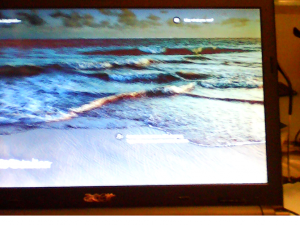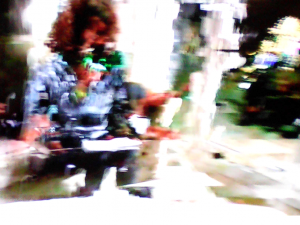Hugh Sheppard
As one who won’t follow Murdoch’s fashion, even to the extent of Freesat, I’ve been lately concerned that a previously satisfactory Freeview feed had deteriorated.
The loft-aerial + 8-way distribution amp. still looked OK, but the signal needed a Humax PVR across it as the TV sets in different rooms wouldn’t cope. Admitting to waning powers, on my part as well as the signal strength, I called in Horizon Aerials of Basingstoke.
In sum, the Labgear 8-way-amp had failed thanks to a wide-band aerial overload from local 4G mobile phone signals; un-screened fly-leads local to the TVs and PVRs had heavy interference from power leads, and a downlead behind the wall-plate outlet was poorly installed with a dry-joint and a big-kink in it that gave a 30% reduced strength.
So no new aerial, but a new 4G compliant distribution amp and new screened fly-leads – made up on the spot – brought in 100% signal quality and signal strength that I have never seen before!
Apart from one-offs, the key lesson is to use screened aerial leads, not the tiddly thin black ones that I’d thought so nice from Maplins. And perhaps to admit that a professional installer knows a tad more than a one-time PTO.
Dave Mundy
I have always been in interested in receiving out-of-area TV ever since the 1950s at home in Nottingham where I could get Granada and Anglia as well as the local ATV (and Spanish TV – with the help of ‘continental interference’!).
When I joined the BBC, and moved to West London, I tried lots of different aerial amplifiers. Using any British-made ones I got regular white flashes on the picture and deduced that they were due to Heathrow’s radar. When I changed to German-built amplifiers, the flashing stopped because they were fully screened and in a metal case. Likewise, the German aerials were made from anodised aluminium, the UK ones were just bare aluminium and so got oxidisation on them. Satellite cables are double-screened as the signals can be very weak.
Dave Plowman
I tend to use decent satellite cable and F plugs wherever I can these days, even for plain UHF.
Belling Lee plugs always struck me as a particularly poor design.
So saying, my aerial DA is still working OK and must be well over 30 years old. But is located in the cellar, so perhaps better screened than most.
Tony Crake
Pre- made Coax interconnect cables are often NOT coax… any serial ident with a "2" in it or "CV" is just a bit of bell flex when you dismantle it !
Keith Wicks
A relative has just sent me some pictures showing a problem with her new TV. To me, it just looks like a case of having to send the set back to the shop for a replacement. But has anyone here any idea of what the problem might be? I haven’t a clue. And I’m sorry, but I have no more information about this yet, except that the fault is "intermittent". I’d be inclined to give the set a thump if it was mine, but I shan’t give that as a recommendation. Any better suggestions would be much appreciated.
(Click on the pictures below to see larger versions:
use your Browser’s BACK button to return to this page)
Graeme Wall
Possibly a dodgy aerial lead, looks like signal break-up.
Ian Hillson
Agreed – weak signal: was everything OK on the old telly?
The only thing that could have changed, apart from aerial blowing over in the storms, is a poor connection in the aerial lead – coaxial connectors are notorious for this. If there’s an actual socket on the wall then check its middle connection as the central inner receptacle can sometimes get splayed out if plugged/unplugged too often.
Pat Heigham
I concur, bad aerial connection.
Is the TV trying to receive on an indoor aerial? If a roof/chimney mounted one is in play, has it got blown out of alignment with the recent windy weather?
I always make my own co-ax fly leads, and solder the centre conductor, instead of a silly kink in the conductor which is a quick but nasty solution by the aerial installers.
I live in a series of blocks of flats, which had an amplified TV distribution system installed. When terrestrial digital broadcasting was due, we had new aerials and amplifiers installed, and I got the engineers to dance around on the roof with their meters to pinpoint the best signal strength position. This led to the mast being put though the roofs, which created another problem – rain leaked down the mast, and ruined the stairwell ceilings!
But the pictures, (and HD) are GREAT! –
(now what about some decent programmes!)
Dave Plowman
I no longer bother with UHF cable or plugs – apart from the last one into the telly. Use a decent satellite cable and F-connectors everywhere else.
Pat Heigham
Yeah, F connectors are on all the output cables from our dist. amps, but I still get the feeling that they are again quick install components – how certain are they?
Keith Wicks
Thanks to all who responded to my request for help with a relative’s TV problem. As you all thought, the problem was a weak signal going into the aerial socket.
The screen pictures did not look like the results I have had on two receivers when the signal strength was low, and I was not able to reproduce the effect in tests with my receivers. So I doubted that the problem was signal strength. But I did ask my relative to check using a neighbour’s aerial. That failed because the neighbour was not in but, on returning home, my relative found that the TV set worked perfectly.
So perhaps, originally, the aerial plug was not inserted fully, or maybe there was an intermittent connection between the aerial cable and the centre connector of the plug. I do not normally have access to that TV receiver as it is located about 70 miles away but, the next time I visit, I shall solder that connection — just in case.
Dave Plowman
Is there not a signal strength and quality ‘meter’ somewhere in the menu?
Keith Wicks
I was dealing with this problem from a distance, and trying to help an extremely non-technical relative. I looked on the internet but did not find a manual for the set. The owner has one, but seems to be unable to do anything technical, apart from the essentials. So checking signal level and quality would probably have been too much for her. However, all is now well — for the moment, at least.
Ian Hillson
If it’s a flying lead between the wall socket and the telly, then just take a known good one (soldered!) with you – or get her to check the length of the one 70 miles away and pop a new one in a jiffy bag to her as a Christmas pressie. Just in case.
That should go through that large slot at local Postage Police PO and cost under a couple of quid to send. If more portly than that it’ll be double that price, as a small parcel.
Keith Wicks
I see on eBay that one can buy an aerial lead for as little as 99p (including VAT and P&P), and it comes with a an adaptor to convert one end from male to female, if required.. Not only that, but buy two and get 10% off the second one! But I suppose you get what you pay for. Anyway, I’ve already got a good spare lead, if it is needed. But I’m not going to do anything unless the fault returns.
Pat Heigham
F plugs were mentioned earlier: owing to the quick twist fix pattern, the co-ax cable centre conductor actually becomes the pin of the plug, thus no possibility of dodgy contact down the middle of a standard co-ax plug pin! Aerial installers just tend to put a kink in the conductor* and hope! Not really good enough, I don’t think!
(* Simon Rattle and others are not kinky, by the way …!)
John Howell
I am not too familiar with F plugs and I was suspicious of the ‘centre conductor becoming the pin’.
So I found a couple on some coax ends and took them apart. If these were typical, the grip on the centre conductor was quite strong, there was no kink and the resistance across the joint was a steady 15mΩ. The connectors screw together very positively and the strain relief arrangements are better than any ‘domestic’ coax I’ve ever seen, none of the ‘bend over’ tabs in a ‘forest of braid’.
Also with the F plug there is one less joint to give RF losses.
Now I’ve played with the F connector I rather like it!
There is a very informative page http://www.aerialsandtv.com/cableandleads.html#SuperiorFConn with lots about connectors, cable, interference from 4G transmitters, etc.
Geoff Fletcher
A very informative page.
Keith Wicks
"Very informative" is an understatement. It’s astonishing! Many thanks for the link to this most useful source.
Dave Plowman
Unsoldered domestic coax ..Not so much the centre on either type of plug being the issue, as the centre can be soldered on a Belling Lee Standard Coax connector. But the screen connection on an F-Plug is such a more sensible way of doing it.
Also, you can examine an F after assembly to make sure there are not any stray wires from the screen shorting things out.
But the fact that the F-Connectors lock in place could be a disadvantage for some uses.
Bernie Newnham
I suppose with digital, the quality of the connectors and cable is only relevant if it doesn’t work – there’s no "improving" as in analogue. It either works or it doesn’t.
John Howell
But a dodgy connection reduces the safety margin below which reception fails.
Hugh Sheppard
Ye-es, but when my digital signal was degraded thanks mainly to unscreened flyleads, the Humax decoded it cleanly when the Sony TV wouldn’t.





